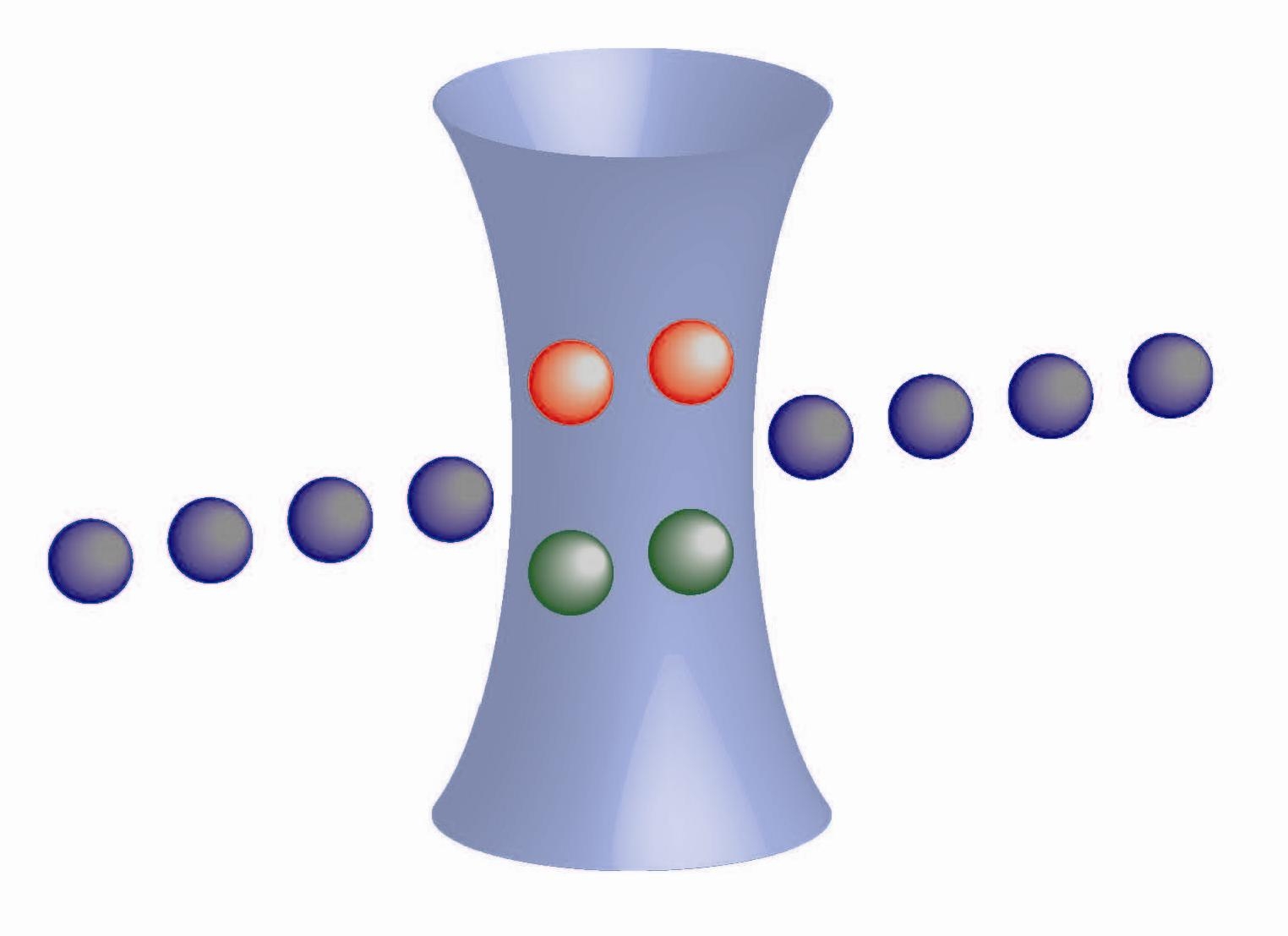|
|
|
This group has studied the interaction of optical frequency combs with trapped ions, and is currently developing techniques for ultrafast control of trapped Ytterbium ions using the pulsed optical fields created by mode-locked lasers. The wide bandwidth of a pulse from our mode-locked laser allows it to act as thousands of pairs of phase-locked Raman lasers driving transitions between qubit states (in our case, separated by more than 10 GHz). By creating specially tailored, short trains of strong pulses, we may perform a number of useful manipulations in times faster than a single period of the trapped ion’s harmonic motion (about 1μs). This is a regime previously unexplored for quantum logic gates in trapped ions and one that has many advantages. “Quantum Control of Qubits and Atomic Motion Using Ultrafast Laser Pulses,” J. Mizrahi, B. Neyenhuis, K. G. Johnson, W. C. Campbell, C. Senko, D. Hayes, C. Monroe, ArXiv 1307.0557 (2013). We have recently demonstrated our ability to flip the spin of the qubit using two, 10ps pulses separated by a time of about 72ps as well as our ability to quickly rotate the phase of our qubit (a rotation about the z-axis in the bloch sphere shown). 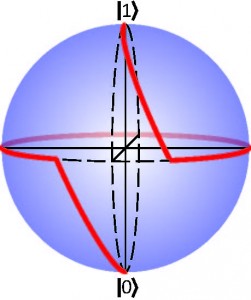 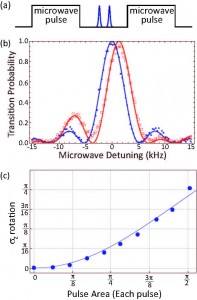
“Ultrafast Gates for Single Atomic Qubits,” W. C. Campbell, J. Mizrahi, Q. Quraishi, C. Senko, D. Hayes, D. Hucul, D. N. Matsukevich, P. Maunz, and C. Monroe, Phys. Rev. Lett. 105, 090502 (2010). We have also demonstrated entanglement of our ion’s qubit state with our ion’s motional state using qubit state dependent momentum kicks. During one of these kicks, momentum, the sign of which is determined by the qubit state, is transferred to the ion and brings about a splitting of the ion’s wave packet into regions of “1” and “0”. Each kick can be performed in less than 1ns. Proof of this entanglement was shown by our ability to disentangle the spin from the motion only by waiting an integer multiple of trap periods and kicking in the opposite direction to bring the wave packet back together. “Ultrafast Spin-Motion Entanglement and Interferometry with a Single Atom,” J. Mizrahi, C. Senko, W. C. Campbell, K. G. Johnson, C. W. S. Conover, and C. Monroe, Phys. Rev. Lett. 110, 203001 (2013). We are currently working to implement fast entangling gates between trapped ion qubits along the lines of L.-M. Duan (2004). Fast entangling gates have the advantage that they may be performed much faster than the period of atomic motion in the trap. Furthermore, such gates can be performed on ions embedded in large crystals without needing to address individual lines in the congested collective motional spectrum of large crystals. This simplification may enable scaling of trapped ion quantum information processing to large numbers of ions. External references: “Speed Optimized Two-Qubit Gates with Laser Coherent Control Techniques for Ion Trap Quantum Computing,” J. J. Garcıa-Ripoll, P. Zoller, and J. I. Cirac, Phys. Rev. Lett. 91, 157901 (2003). “Scaling Ion Trap Quantum Computation through Fast Quantum Gates,” L.-M. Duan, Phys. Rev. Lett. 93, 100502 (2004). “Superfast Laser Cooling,” S. Machnes, M. B. Plenio, B. Reznik, A. M. Steane and A. Retzker, Phys. Rev. Lett. 104, 183001 (2010). |
| Past Experiments: |
Entanglement of qubits with an optical frequency comb
“Entanglement of Atomic Qubits Using and Optical Frequency Comb”D. Hayes, D. N. Matsukevich,P.Maunz, D. Hucul, Q. Quraishi, S.. Olmschenk, W. Campbell, J. Mizrahi, C. Senko, and C. Monroe, Phys. Rev. Lett. 104, 140501 (2010). |
|
Ultrafast coupling of atomic and photonic qubits
“Ultrafast Coherent Coupling of Atomic Hyperfine and Photon Frequency Qubits,” M.J. Madsen, D.L. Moehring, P. Maunz, R.N. Kohn, Jr., L.-M. Duan, and C. Monroe, Phys. Rev. Lett. 97, 040505 (2006).
“Probabilistic Quantum Gates between Remote Atoms through Interference of Optical Frequency Qubits,” L.-M. Duan, M.J. Madsen, D.L. Moehring, P. Maunz, R.N. Kohn, Jr., and C. Monroe, Phys. Rev. A 73, 062324 (2006). |
|
Precision Lifetime Measurements
Precision Lifetime Measurements of a Single Trapped Ion with Ultrafast Laser Pulses, D.L. Moehring, B.B. Blinov, D.W. Gidley, R.N. Kohn, Jr., M.J. Madsen, T.D. Sanderson, R.S. Vallery and C. Monroe, Phys. Rev. A 73, 023413 (2006). |
|
Broadband laser cooling and crystallization of trapped Cd+ ions
“Broadband Laser Cooling of Trapped Atoms with Ultrafast Laser Pulses,” B.B. Blinov, R.N. Kohn, Jr., M.J. Madsen, P. Maunz, D.L. Moehring, and C. Monroe, J. Opt. Soc. Am. B 23, 1170 (2006). |
|
Partial Rabi flopping of a 111Cd+ qubit with GHz Rabi frequencies. Stimulated Raman transitions are drivin with an off-resonant Q-switched Nd:YAG laser at 266nm (5 nsec pulse duration, but >15 GHz bandwidth). “Efficient Photoionization-Loading of Trapped Cadmium Ions with Ultrafast Pulses,” L. Deslauriers, M. Acton, B. B. Blinov, K.-A. Brickman, P. C. Haljan, W. K. Hensinger, D. Hucul, S. Katnik, R. N. Kohn Jr., P. J. Lee, M. J. Madsen, P. Maunz, S. Olmschenk, D. L. Moehring, D. Stick, J. Sterk, M. Yeo, K. C. Younge, and C. Monroe, Phys. Rev. A (accepted for publication 2006), quant-ph/0608043 (2006). |
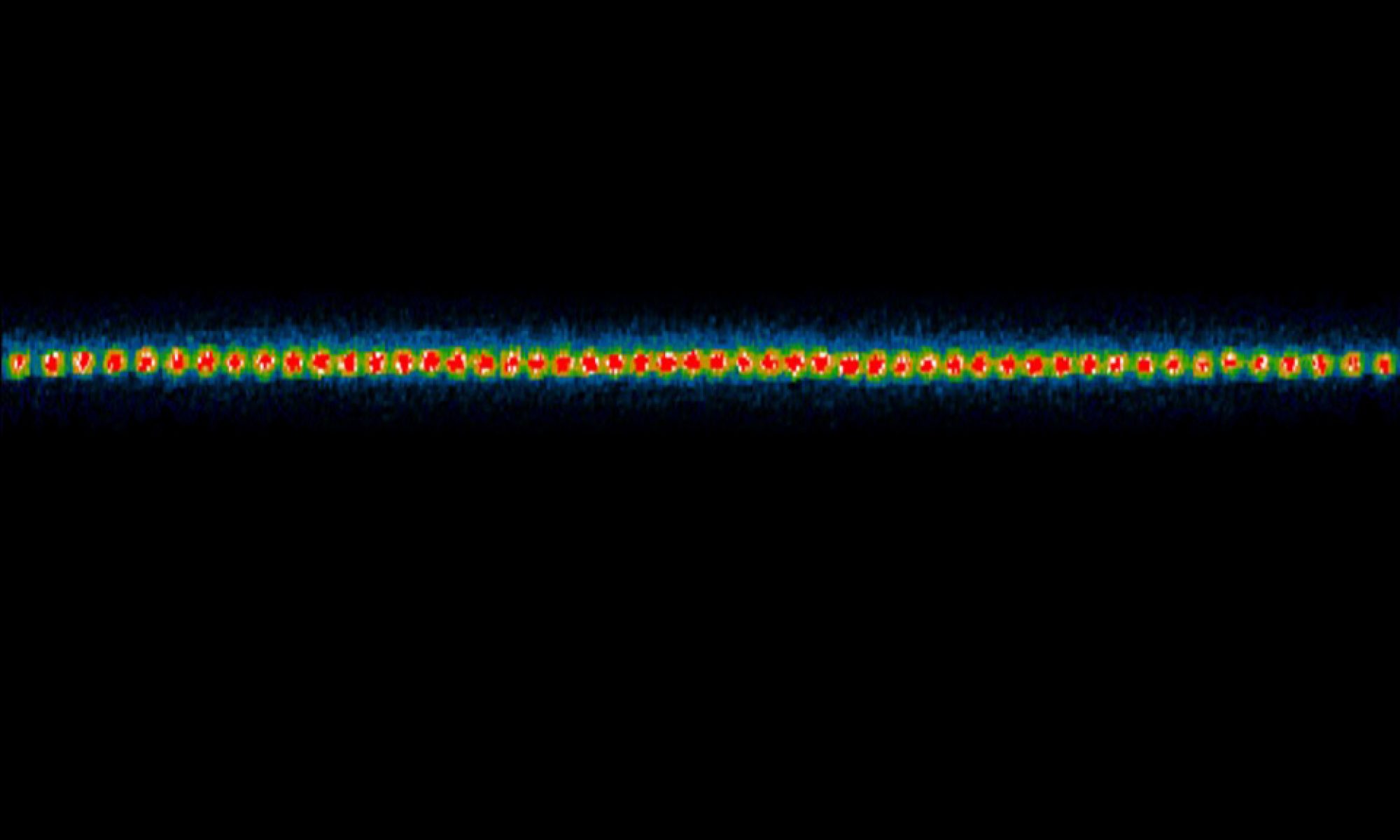
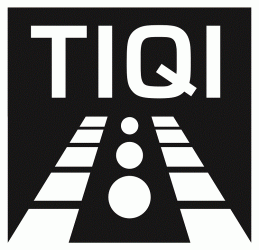
Trapped Ion Quantum Information
CHRISTOPHER MONROE, Principal Investigator. University of Maryland Department of Physics, Joint Quantum Institute, and Center for Quantum Information and Computer Science
